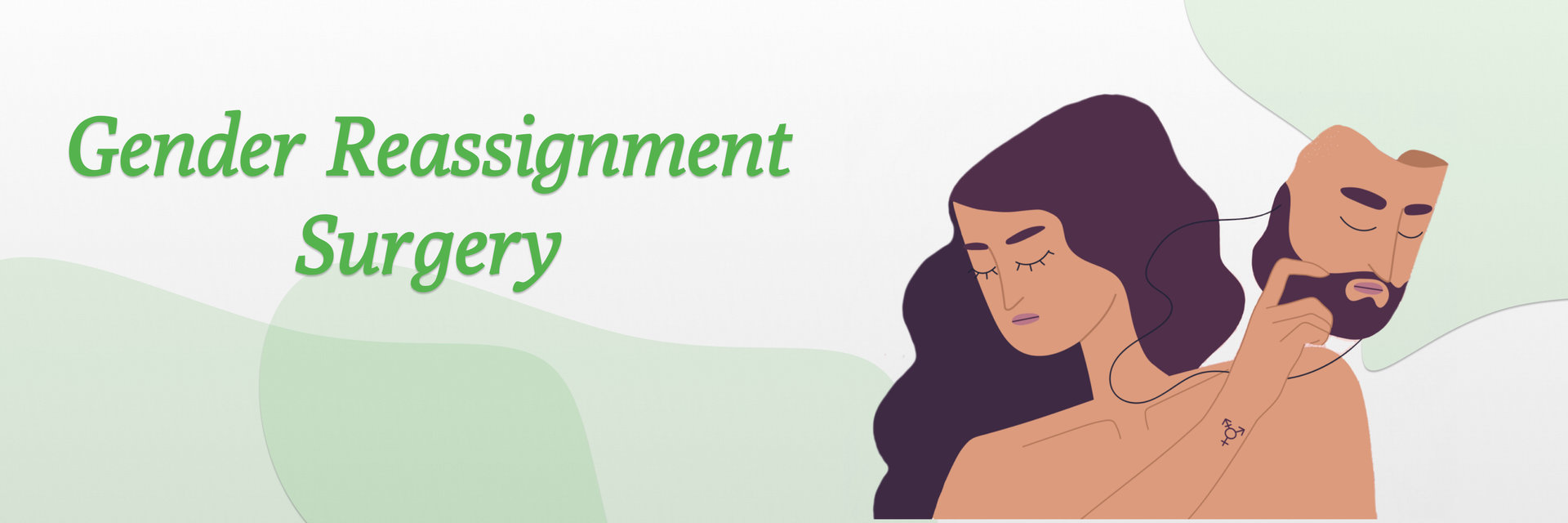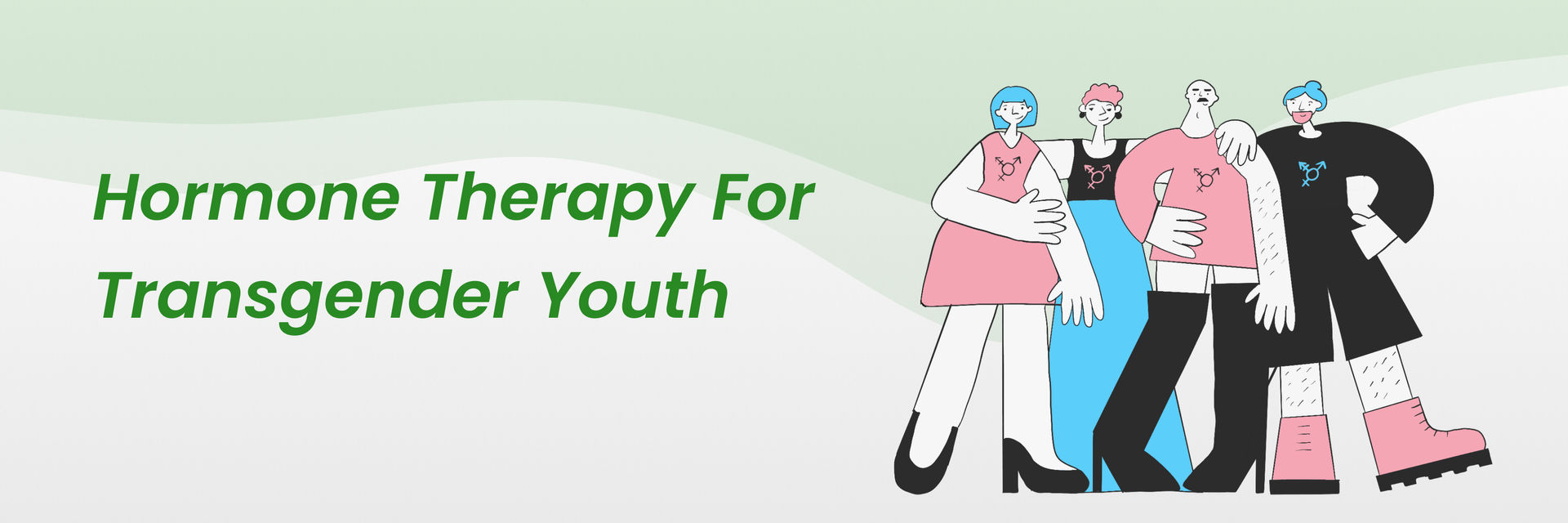Overview
Keyhole top surgery is a minimally invasive procedure that involves making a small incision along the border of the areola. The surgeon then carefully removes the breast tissue through this opening, resulting in a flatter chest that aligns more closely with the patient's gender identity. This technique is often preferred due to its less invasive nature and the reduced scarring it leaves behind.

Keyhole top surgery is designed for a masculine chest. It minimizes the scars by removing breast tissue and reshaping them. Life-changing for those with gender dysphoria, it brings comfort to their bodies. Dive into the details of benefits, risks, recovery, and considerations for transgender individuals.
Read further as we explore the world of keyhole top surgery and learn how this procedure can help individuals on their journey to self-acceptance and fulfillment.
If you're considering gender confirmation surgery, you won't want to miss this.
Learn more about how it works.
Your well-being is our priority - call us to book your appointment today.
How Does Keyhole Surgery Transgender Work?

It is a form of minimally invasive surgery that is used to masculinize the chest in transgender individuals.
Here is an overview of the key steps involved in the procedure:
| Consultation Before | Before surgery, a consultation discusses desired outcomes, medical history, and potential risks. Surgeon examines the chest for the best approach. |
| Pre-operative preparation | Patient instructed to stop certain medications and given preparation guidelines. |
| Anesthesia | General anesthesia or IV sedation ensures patient comfort and pain-free experience. |
| Incision | Surgeon makes a small incision around the areola for breast tissue removal, tailored to the individual case. |
| Surgery | Utilizing specialized instruments and cameras, the surgeon removes breast tissue, potentially repositioning nipples for a more masculine appearance. |
| Time taken | Typically 2 to 3 hours under general anesthesia. |
| Hospital Stay | Outpatient procedure - patients can go home the same day. |
| Closure | Surgeon closes the incision with sutures or surgical tape. Visible results expected in 2 to 3 weeks post-surgery. |
| Recovery | Short recovery period, most patients return to normal activities within a week or two. Patients rest and follow care instructions during the initial recovery phase. |
| Post-operative follow-up | Follow-up appointments with the surgeon for monitoring recovery and addressing any concerns. |
Take charge of your health and your life. Contact us today!
Benefits/Risks of Keyhole Surgery Transgender

Keyhole top surgery is ideal for transgender individuals desiring chest masculinization. It brings advantages like minimal scarring, quick recovery, and a less invasive procedure. Keep in mind that results vary based on individual factors like skin type, breast size, and desired outcome.
It is important to have a thorough discussion with your surgeon to understand the best approach for you.
Here are some of the main benefits of keyhole surgery for transgender individuals, broken down by category.
Let's explore the benefits of Keyhole Top Surgery for transgender individuals.
Category | Benefits |
| Consultation Before |
|
| Cosmetic Outcome |
|
| Recovery |
|
| Precise Surgery |
|
| Post Surgery |
|
| Quick Results |
|
With benefits also come certain risks, keep yourself updated with both the pros & cons of keyhole surgery transgender.
Factors | Risks |
Complications from surgery |
|
Complications from the surgery technique |
|
Outcome dissatisfaction |
|
Cost | Higher costs than traditional open surgery. |
Revision Surgery | Risk of revision surgery to correct a problem or improve the final outcome. |
Nerve damage and Loss of sensation | Risk of nerve damage or loss of sensation in the chest area |
Loss of breast tissue | Risk of loss of breast tissue which might impact the final result |
Anesthesia complications | Risk of complications from the use of anaesthesia. |
Keyhole top surgery, also called peri-areolar or keyhole mastectomy, is a less invasive choice for transgender individuals pursuing chest masculinization.
This method presents various advantages over traditional open surgery, making it appealing for those in the transition phase.
Considering factors like skin type, breast size, and desired results, individual outcomes vary. Discuss thoroughly with your surgeon to determine the best approach.
Talk to your surgeon to explore if this procedure suits you and gain clarity on potential outcomes and risks.
Do I fit in? If that’s what comes to your mind then read further to know the criteria.
What are the eligibility criteria and requirements for keyhole top surgery transgender?

Eligibility Criteria and Requirements:
- Vary based on surgeon and individual health needs.
- General guidelines followed by most surgeons.
Keyhole Top Surgery Overview:
- Peri-areolar or donut mastectomy.
- Aimed at removing breast tissue for gender transition.
Common Candidates:
- Most performed in female-to-male (FTM) transitions.
- Occasional cases in male-to-female (MTF) transitions.
Suitability:
- Ideal for small to medium-sized breasts.
- Preferred by those seeking a less invasive option.
Procedure Details:
- Breast tissue removal through a small areolar incision.
- Results in less scarring and shorter recovery compared to traditional mastectomy.
Candidate Assessment:
- Not universally suitable for everyone.
- Consultation with an experienced surgeon is crucial.
Medical Evaluation:
- Thorough examination required, including physical exam and blood work.
- Possible additional tests like imaging may be recommended.
Also, having a stable social and psychological support system in place is crucial before having this kind of surgery.
Generally surgeons will require that the individuals seeking keyhole top surgery:
- is at least 18 years old (some surgeons may require the individual to be older).
- has completed a minimum of one year of hormone therapy, if they are transitioning from male to female.
- has a stable social and psychological support system in place
- has a detailed understanding of the procedure and its potential risks and benefits.
- has realistic expectations for the outcome of the surgery.
The individual must share their medical history, including past surgeries and health conditions, with the surgeon. These details may impact the outcome of keyhole top surgery.
While these are general criteria, the surgeon, considering the individual's health needs and circumstances, makes the final decision on proceeding with the surgery.
Let’s learn about some of the pre- & post-operative guidelines and the side effects of Transgender Keyhole top Surgery.
How To Prepare For Keyhole Top Surgery?
- Pre-operative Guidelines
Pre-operative preparation is important in ensuring a safe and successful keyhole top surgery for transgenders.
Here are some of the key steps involved in pre-operative preparation for this procedure:

| Your surgeon will give you detailed information about the procedure, including the risks and benefits, and what to expect during and after the surgery. They will also provide you with pre-operative instructions and answer any questions you may have. |
| You will be instructed to stop taking certain medications that may increase the risk of bleeding during the surgery, such as blood thinners, aspirin, and anti-inflammatory medications. |
| You will need to undergo a medical evaluation to ensure that you are healthy enough to undergo surgery. This may include blood tests, a physical examination, and a review of your medical history. |
| If you are a smoker, you will be instructed to quit smoking before the surgery as smoking can slow down the healing process. |
| You'll need someone to drive you home after the surgery and help you during the recovery period. It is also a good idea to arrange for help at home, as you will need to take it easy for a few days and may not be able to do certain tasks. |
| It's a good idea to purchase any necessary recovery items such as gauze, bandages, and ice packs before the surgery. |
| Your surgeon may have more instructions for you. Depending on your individual case, such as wearing compression garments, fasting before the procedure, or taking antibiotics. |
It's important to be prepared and follow the instructions from your surgeon. This will help to reduce risks, improve your recovery and to achieve the best possible outcome of your surgery.
You must read through some important points here - the side effects, results, recovery and success rates!
Side Effects of Keyhole Top Surgery Transgender
As with any surgical procedure, there are potential risks and side effects associated with keyhole top surgery.
Some of these can include:

Keyhole top surgery, while generally considered a safe and effective procedure, can come with some potential side effects. It's important to weigh these against the potential benefits and discuss them thoroughly with your surgeon before making any decisions. Here's a breakdown of some key side effects:
Short-term side effects:
- Pain: You'll likely experience post-surgical pain, managed with medication and gradually subsiding over time.
- Swelling and bruising: This is normal and usually improves within a few weeks.
- Bleeding: Minor bleeding around the incisions is expected, but excessive bleeding requires immediate medical attention.
- Numbness: Loss of sensation around the incisions and nipples is common, gradually improving over months.
- Fatigue: Rest and recovery are crucial, so expect to feel tired for some time.
- Discomfort: Tightness, burning, or itching around the incisions can occur temporarily.
Long-term side effects:
- Scarring: While keyhole aims for minimal scarring, some is inevitable. Scar appearance varies and can be improved with scar care techniques.
- Nipple sensation changes: Sensitivity may be reduced or altered, though some techniques aim to preserve it.
- Asymmetry: Minor asymmetries are possible but can often be addressed with additional procedures.
- Capsular contracture: In rare cases, scar tissue around the implant can harden and cause discomfort, requiring revision surgery.
- Psychological impact: Adjusting to your new body can be emotionally challenging. Support systems and therapy can be helpful.
Take charge of your health and your life. Contact us today!
Tensed after reading about the side effects?
Relax!
You can reduce the risk of side effects by following the below post-operative guidelines.
Post-operative Guidelines For Keyhole Surgery Transgender

Following your keyhole top surgery, proper post-operative care is crucial for optimal healing and a successful outcome. These guidelines offer a general overview, but always follow the specific instructions provided by your surgeon.
General Care:
- Rest and Relaxation: Prioritize rest and avoid strenuous activity for the first few weeks. Gradually increase activity as tolerated.
- Pain Management: Take prescribed pain medication as directed by your doctor.
- Wound Care: Keep your incision sites clean and dry. Remove dressings according to your surgeon's instructions and gently cleanse the area with mild soap and water. Pat dry carefully.
- Drain Care: If you have surgical drains, empty and document the output as instructed. Remove or have them removed by your doctor according to their schedule.
- Bandages and Compression: Wear your compression garment or binder as instructed by your surgeon. This helps reduce swelling and promote healing.
- Showering and Bathing: Ask your doctor when it's safe to shower or bathe. Avoid soaking the incisions in a tub for several weeks.
- Sleeping: Elevate your upper body with pillows while sleeping to reduce swelling and discomfort. Avoid sleeping on your stomach initially.
- Diet: Maintain a healthy diet and drink plenty of fluids to support healing.
- Medications: Continue any prescribed medications unless advised otherwise by your doctor.
- Smoking: Avoid smoking, as it can hinder healing and increase the risk of complications.
Specific Concerns:
- Bleeding: Notify your doctor immediately if you experience excessive bleeding, redness, or swelling around the incisions.
- Infection: Watch for signs of infection, such as fever, chills, redness, or pus drainage. Seek medical attention if you suspect an infection.
- Numbness: Numbness around the incisions and nipples is common after surgery, and it usually improves over time. If you have concerns, discuss them with your doctor.
- Scarring: Keyhole surgery aims for minimal scarring, but some scarring is inevitable. Discuss scar care options with your doctor.
- Emotional Well-being: Recovery can be an emotional journey. Seek support from loved ones, therapists, or support groups if needed.
Life After Keyhole Top Surgery Transgender

Results | Results of keyhole top surgery are immediately visible, but full healing and final results may take weeks or months. Swelling and bruising are common. Follow your surgeon's post-operative care instructions for the best outcome. |
Recovery | It is common for anyone who has undergone surgery to experience pain and discomfort. Your surgeon will provide you with pain medication to help manage this. You also need to wear a compression garment for several weeks after surgery to help reduce swelling and support healing. |
Long-lasting/ Permanent | Once the incisions have healed, the results of keyhole top surgery are long-lasting and can be considered permanent. The removed breast tissue will not grow back, and the chest will retain its new shape. There may be some residual asymmetry or scarring. If so, this should be discussed with your surgeon before the surgery. |
Keyhole top surgery can be a life-changing procedure for many transgender individuals. It can help to reduce chest dysphoria and improve self-esteem and body image.
Surgery is a huge decision and should not be taken lightly. It's always good to consider the risks, benefits, and mental and financial aspects before making any move.
You must seek guidance from experienced mental health professionals and surgeons—specifically, those with experience working with transgender individuals.
What are the Success Rates of Keyhole Top Surgery Transgender?
The success rate of keyhole top surgery for transgender patients is exceptionally high. The keyhole top surgery is a very effective technique for creating a more masculine chest appearance.
- Overall Satisfaction: Most studies report high patient satisfaction rates with keyhole top surgery, ranging from 70% to 90%. These studies typically measure satisfaction with factors like chest appearance, scarring, and overall surgical experience.
- Complication Rates: Complication rates for keyhole top surgery are generally low, typically around 5-10%. Common complications include bleeding, infection, wound healing issues, and nipple sensitivity changes.
- Aesthetic Outcomes: Studies show around 80-90% success in achieving the desired chest contour. However, preservation of nipple sensitivity varies widely based on the specific technique used.
Is Relapse possible after keyhole top surgery transgender? Let’s check if it’s possible or not, and what are the factors?
Relapse after Keyhole Top Surgery
Relapse after keyhole top surgery (also called peri-areolar top surgery) is a possible complication. However, it is considered to be rare.
The risk of Relapse can depend on a variety of factors:
| Individuals with more breast tissue may be at a higher risk of Relapse because more tissue was left behind. |
| The surgical technique used by the surgeon can affect the risk of Relapse. For instance, if not all glandular tissue is removed or the remaining tissue isn't reshaped correctly, there might be a higher risk of relapse. |
| A skilled surgeon who knows this type of surgery well is more likely to make things go well and lowers the chance of problems coming back. |
| Gaining or losing weight after the surgery can affect the shape of the chest and could cause Relapse. |
| It's an integral part of the transition process for many transgender people. Hormones can play a role in the remaining breast tissue post-surgery and can also affect the result of the surgery. | |
| The patient's unique physical characteristics may also play a role in the risk of Relapse. Some people may have a greater chance of Relapse due to the underlying anatomy. |
This surgery is not without risks, and each person will respond differently. That's why it's crucial to have a detailed consultation with the surgeon, understand the risks and possible complications, and set realistic expectations.
You also need to be aware that even if there is a relapse, revision surgeries are available and are sometimes done to correct this.
Let’s get some insights on the cost & insurance part.
What is the Cost of Keyhole Top Surgery For Transgender?
The cost of keyhole top surgery for transgender individuals differs based on factors such as surgery location, surgeon's experience, and the specific technique employed.
Here is a general range of what you might expect to pay for keyhole top surgery:
- $3,000 to $10,000: This is the most common range for keyhole top surgery costs.
- Less than $3,000: It is possible to find surgeons who charge less than $3,000, but this is less common.
- More than $10,000: In some cases, the cost of keyhole top surgery can exceed $10,000. This is more likely to be the case if you have a complex medical history or require additional procedures.
Want to inquire about personalized treatment expenses? Don't hesitate. Talk to us today.
Does Insurance Cover the Cost of Keyhole Top Surgery For Transgender?
Whether insurance covers the cost of keyhole top surgery for transgender individuals depends on various factors, including:
- Your specific insurance plan: Policies can differ; some include top surgery in transgender healthcare benefits, while others may have specific criteria or none at all.
- Your location: Coverage varies by state or country; some places mandate transgender care coverage, while others provide limited protection.
- Your diagnosis: Certain plans may require a gender dysphoria diagnosis from a qualified mental health professional before covering top surgery.
- Details of your surgery: Costs differ based on top surgery techniques (keyhole, double incision, etc.), and some plans may only cover specific options.
Hope all your doubts related to keyhole surgery transgender must have got cleared!
Have some more doubts?
Then do not miss reading the FAQs below.
FAQs

- Who can have keyhole top surgery?
Ans. It is most commonly performed on individuals who are transitioning from female to male (FTM) but in some cases on individuals who are transitioning from male to female (MTF) as well. Those who are small or medium-sized chest are ideal candidates
- What is the success rate of keyhole surgery?
Ans. The success rate of keyhole surgery is generally quite high, with studies showing a success rate of between 84-98%. The success rate depends on the type of procedure being performed, the skill of the surgeon, and the health of the patient.
- How many holes are in keyhole surgery?
Ans. Upto 4 small incisions
- Can keyhole surgery transgender be reversed?
Ans. It is not possible to fully "reverse" the surgery, but some individuals may choose to undergo additional surgeries to alter their physical appearance. However, it's important to consider that reversing a transgender surgery is a complex and difficult process, with many risks and ethical issues, and that also may have a deep psychological impact in the person's life.







